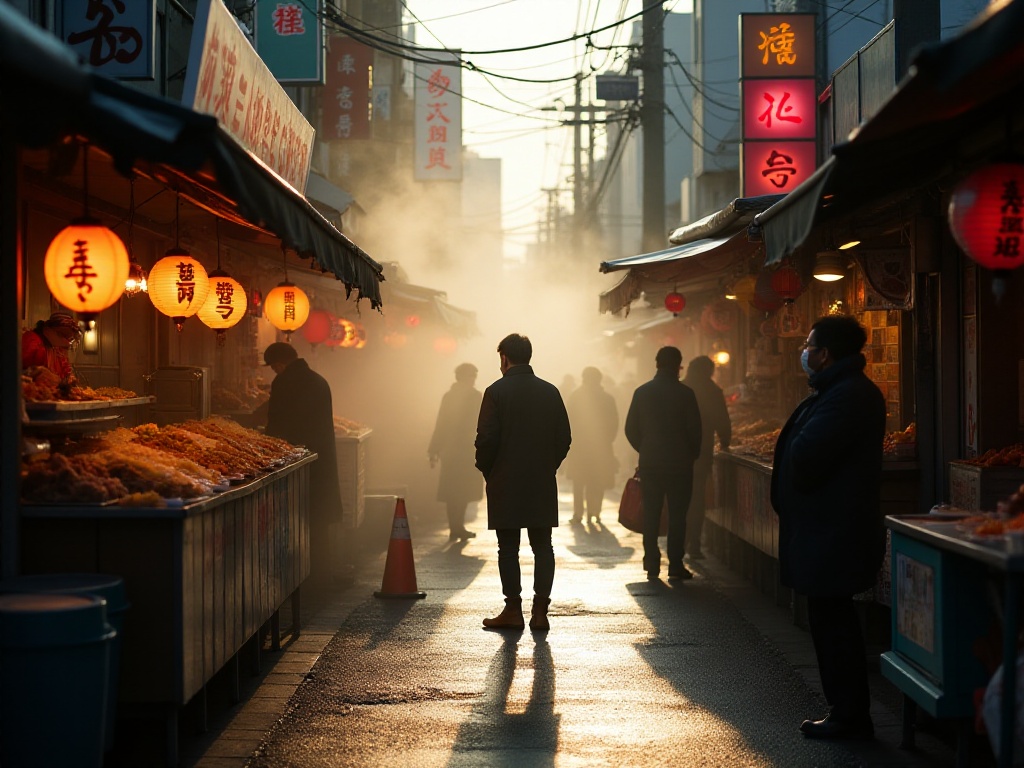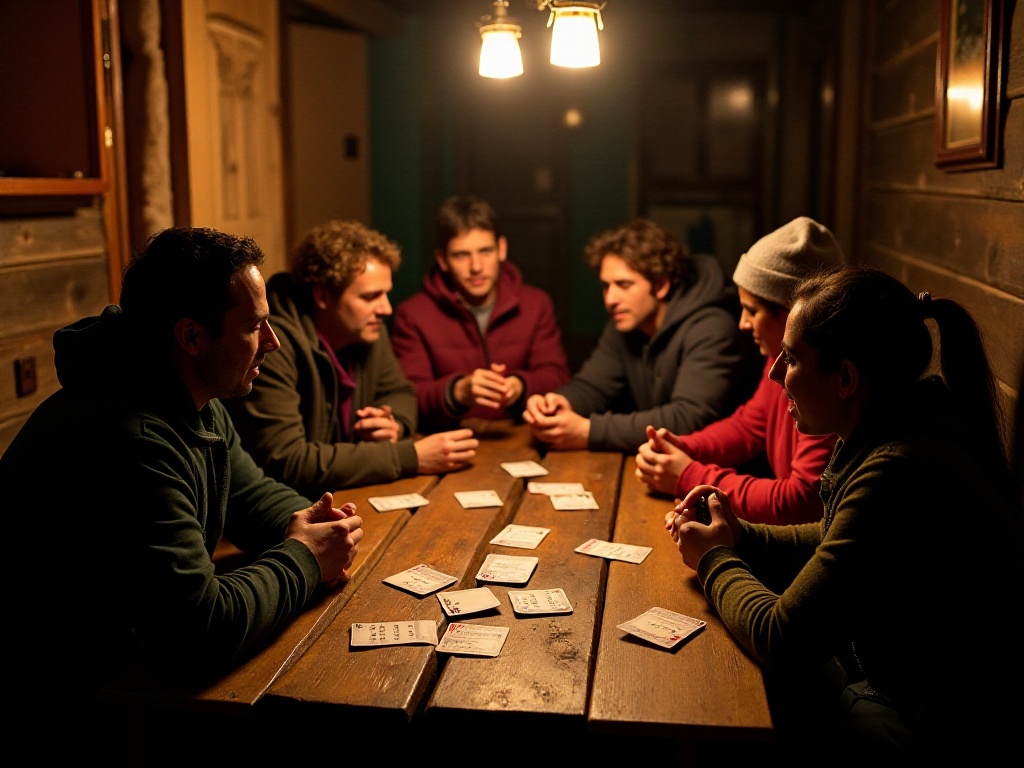
The Trigger
Last winter, while lying in my dorm room scrolling through my phone, I had a crazy idea - to travel alone to rural Japan for a month specifically to practice speaking Japanese. It was right before winter break, when my roommates were all planning their "shopping sprees" in Tokyo and Osaka, but I wanted to embark on a different kind of language advancement journey.
Why choose rural areas? To be honest, in big cities like Tokyo and Osaka, the streets are full of tourists from all over the world, and store clerks speak better English than I do. Every time I tried to practice Japanese, seeing me struggle to form complete sentences, they would kindly switch to English. That's not practicing Japanese - it's basically practicing English.
Moreover, I particularly yearned for the warm atmosphere depicted in "Midnight Diner." You know, whenever I saw scenes of customers sitting at the counter, chatting with the owner about daily life, I thought: wouldn't it be wonderful if I could experience that too? In rural shops, chatting with locals about everyday life, maybe even discovering unexpected stories.
Preparation
After making up my mind, I immediately started "devil training." I would wake up at 6 AM sharp every morning, and the first thing I'd do was turn on NHK news. To be honest, listening to the news was really painful at first - the anchors spoke too fast, and I could only understand a few scattered words. But after persisting for a week, I discovered I could actually understand the weather forecast! Though it was still basic content, this small progress gave me a lot of confidence.
Before bed, I would always watch an episode of the Japanese drama "Solitary Gourmet." The dialogue in this show is actually very natural, with the main character making various exclamations while eating, like "うまい" (delicious) and "やわらかい" (tender). I specifically recorded these clips to listen to repeatedly, trying to imitate his tone and intonation. My roommates said I was crazy, muttering Japanese in the middle of the night.
To better integrate into local life in rural areas, I specifically bought a "Complete Guide to Japanese Local Cuisine" on Taobao. This book was literally my lifesaver! It not only had recipes for local specialties but also included Japanese pronunciation and detailed explanations of ingredients. I wrote down common ingredient names and cooking methods in my notebook and recorded them on my phone to listen to repeatedly. Imagine how cool it would be if I could accurately say "あ、大根と鶏肉の煮物ですね" (Ah, it's simmered daikon and chicken) while an elderly lady was cooking soup!
I also found some bloggers who write about rural Japan tourism online and studied their travel routes and experiences. Through their introductions, I discovered a small town called Tsuwano, which seemed to be exactly the miniature version of rural Japanese life I had imagined.

First Arrival in the Countryside
Finally, the day of departure arrived. When I walked out of JR Tsuwano Station with my suitcase, my first thought was: wow, it's so quiet! It was a completely different world from Tokyo. Located in western Shimane Prefecture, with a permanent population of less than 10,000, it still maintains a very complete ancient castle town appearance.
The streets are lined with traditional samurai residences (buke yashiki), with black walls, gray tiles, and carefully trimmed gardens, making one feel as if they've traveled back to the Edo period. What delighted me most was hearing temple bells every morning - that distant, ethereal sound always calmed my mind.
I booked a stay at an old inn called "Tsuwano Onsen," which reportedly has over a hundred years of history. When I walked in with my luggage, the proprietress greeted me in thick dialect: "いらっしゃいませ、よう来られました" (Welcome, we're so glad you came). It took me a few seconds to react, and I thought: oh no, dealing with dialect might take some effort.
Seeing my confused expression, the proprietress immediately switched to more standard Japanese, showing me around the room while introducing the inn's history. It turns out this inn has been operating since the Meiji period, primarily serving merchants who came to Tsuwano on business. The rooms maintain the most traditional style with tatami mats and shoji doors (paper sliding doors), and even the flower arrangements at the bedside are changed daily with seasonal flowers.

Unexpected Gains
After staying for a few days, I discovered that people here have amazing patience and enthusiasm. Once when I had a cold and wanted to buy band-aids, I didn't know how to say it in Japanese. At the convenience store, I gestured wildly to the store clerk, trying to express what I needed. In a big city, I might have been considered strange. But this auntie not only didn't show any impatience, she smiled and led me to the shelf, pointing and explaining in simple Japanese: "This one is waterproof, good for bathing; this one is ultra-thin, not noticeable when applied to the face..."
As I listened, I thought to myself: I had no idea band-aids could be so complex! Later I learned that Tsuwano receives very few foreign visitors annually, so locals are particularly curious about "outsiders" like me. They would actively ask where I'm from, how long I'm staying in Japan, and if I needed any help.
I remember once when I was shopping at a small store, the owner discovered I was Chinese and immediately enthusiastically said in broken Chinese: "Ni hao! Welcome!" It turned out his son had studied in China, so he had a special fondness for China. That afternoon, I stayed in his shop until closing time, listening to stories about his son's experiences in China. Although we mostly communicated in Japanese, the genuine warmth made me completely forget about language barriers.

Language Breakthrough
By the third week, I clearly felt my Japanese level had made a qualitative leap. The biggest change was that I no longer needed to translate Chinese to Japanese in my head - I could think and express myself directly in Japanese. This progress mainly came from three aspects.
First was my daily ritual of going to an izakaya called "おやじの店" (Old Man's Shop). The owner was a man in his sixties, and the regular customers were also older men. When they got excited while drinking, they would chat with me about topics ranging from morning sumo matches to evening political news.
At first, I was often completely lost, only able to keep saying "そうですね" (I see). But these uncles were particularly interesting - when they saw I didn't understand, they would slow down and explain again using simpler words. And they really liked to repeat things, saying the same point in different ways several times.
I've checked related research showing that after hearing a word 7-8 times, the success rate of memory can reach 85%. That's how I memorized many daily expressions and idioms in the izakaya. For example, authentic expressions like "まいったな" (I give up) and "そりゃそうだ" (That's obvious) were all learned through conversations with these uncles.
The second important source of progress was the local flower arrangement class. By chance, I discovered this class while wandering the streets and signed up out of curiosity. The teacher was a lady in her seventies who was extremely detailed in her teaching. During the two-hour class, she would explain each step using the most basic vocabulary and deliberately slow down her speech.
Through the flower arrangement class, I not only learned some technical terms like "生け花" (flower arrangement), "花器" (vase), and "枝ぶり" (branch form), but also became able to describe flower characteristics in Japanese. Now I can express evaluations like "this flower's form is very beautiful" and "this leaf's color is very vivid" in Japanese.
What delighted me most was meeting a group of local young people. Among them were some running guesthouses in their hometown, some inheriting family farms, and some teaching at local middle schools. Every weekend, they would take me to work in nearby fields and teach me the dialect names for different vegetables.
For example, I can now distinguish between さといも (taro) and じゃがいも (potato), and I know that locals call carrots "にんじん" rather than the standard Japanese "カロット". While weeding and harvesting in the fields, we would discuss many topics, from why they chose to stay in their hometown to their plans for the future. These conversations not only improved my Japanese level but also gave me a deeper understanding of young Japanese people's lives.

Experience Sharing
Through this month-long experience, I've summarized some language learning insights. First, if you also want to improve your language skills through travel, I recommend choosing small cities with populations under 50,000. Based on my observations, cities of this size often retain the purest local culture, and residents have a slower pace of life and are more willing to communicate with foreigners.
In Tsuwano, I often encountered situations where convenience store cashiers would naturally chat about the weather while checking out, or elderly people in the park would actively invite me to join them for tea. These natural communication opportunities are rare in big cities.
Additionally, it's important to actively create communication opportunities. For example, I would go to the same bakery every morning for breakfast. At first, I could only say simple phrases like "これください" (I want this) and "ありがとうございます" (thank you). But after persisting for a week, the owner started remembering my favorite bread types, would recommend new products, and even taught me how to make local specialty matcha bread.
You know what? During the process of kneading dough, I learned at least 20 baking-related Japanese words. For example, "こねる" (knead), "発酵" (ferment), "焼き上がり" (baked product), etc. Although these words aren't commonly used in daily conversation, they made my understanding of Japanese more three-dimensional and rich.
I also discovered that participating in local cultural activities is a great way to improve language skills. Besides the flower arrangement class mentioned earlier, I also participated in tea ceremony and kimono wearing experiences. During these activities, teachers would explain each step in very standard Japanese, which was especially helpful for improving listening comprehension. Moreover, during tea time after the activities, everyone would chat about light topics, creating a relaxed atmosphere perfect for practicing speaking.

Unexpected Discoveries
The biggest gain from this trip was understanding that the most important aspect of language learning isn't how standard your grammar is, but whether you have a sincere desire to communicate. I remember one rainy evening when I met an elderly gentleman using a cane at a street corner. I was trying to get to the station but was a bit lost in this unfamiliar small town.
I asked him in broken Japanese: "すみません、駅はどこですか" (Excuse me, where is the station?). Without hesitation, he offered to take me there with his umbrella. I quickly said it wasn't necessary, but he insisted, saying it's easy to get lost in this weather.
Along the way, we chatted about many things. He told me about working in shipyards when he was young, traveling to ports all over Japan. Now retired, his greatest joy is watching his grandson's baseball games. When talking about his grandson, his eyes lit up as he told me his grandson is now studying at Tokyo University, the first in the family to get in.
Although my Japanese was halting and I often had to gesture to express myself clearly, the elderly gentleman listened patiently, occasionally nodding to show understanding. That kind of sincere desire to understand each other seemed to break through the language barrier. Later I learned that this gentleman was the president of a local historical society who enjoyed chatting with young people.
Another time, I was eating at a small restaurant and ordered a dish I didn't recognize. When it was served, I found the texture particularly special. I described it to the owner using the few adjectives I knew: "おいしい" (delicious), "やわらかい" (tender). Seeing my interest, the owner began explaining how the dish was made.
Although I couldn't understand all the technical terms, through his gestures and simple explanations, I roughly understood that this was a specialty dish that required three days of marinating. In the end, the owner even wrote down the dish's name and main ingredients so I could order it elsewhere. These experiences of heartfelt communication made me feel that language was no longer just cold symbols, but a bridge connecting people.

Insights
This journey gave me many insights. First, while there are no shortcuts in language learning, there are fast tracks. The speaking level that might take a year to achieve in a traditional classroom can be reached in a month through total immersion. Of course, this requires truly stepping out of your comfort zone, putting down your phone, and communicating with real people.
During my month in Tsuwano, I barely used my phone. Every morning after waking up, my first task was going to the bakery, then maybe to flower arrangement class, or to the fields with young people, and in the evening to the izakaya to chat with the uncles. This life completely immersed in a Japanese environment made my progress far exceed expectations.
Second, I discovered that the most important aspect of language learning is finding the right environment and method. In big cities, although there are many language schools and communication opportunities, it's often too convenient, leading to unconscious reliance on English. In rural areas, because there are no other options, you're forced to communicate in Japanese. This "forced" environment actually becomes the best teacher.
Finally, this experience made me understand that language learning isn't just about mastering a skill, but about understanding a culture and making new friends. In Tsuwano, I met many warm-hearted friends and learned many interesting stories. These experiences filled me with enthusiasm for learning Japanese because I knew that mastering this language wouldn't just help me understand anime and Japanese dramas, but would allow me to enter the lives of ordinary Japanese people and understand their joys and sorrows.
Do you have similar language learning experiences? Feel free to share in the comments. If you're also considering traveling to rural Japan, I'm happy to give you more advice. After all, while such a journey might seem a bit crazy, the rewards definitely exceed expectations.
Next
Learning Languages in Foreign Lands: An Immersive Experience Shared by a Travel Blogger
Explore the dynamic relationship between travel and language learning, examining how immersion enhances language skills and how linguistic abilities deepen travel experiences through cultural engagement and authentic interactions
One Person's Language Journey: Measuring the World with Footsteps, Making Travel the Best Language Classroom
Explore effective methods and benefits of learning languages through travel, combining immersive strategies with practical approaches, supported by digital tools and structured resources for enhanced language acquisition and personal growth
One Person's Language Learning Journey: My 90-Day Immersion Experience in a Rural Japanese Town
Explore how travel facilitates language learning through immersive environments, covering natural and structured learning methods, along with guidance on choosing suitable language programs and courses to enhance language skills while traveling
Next

Learning Languages in Foreign Lands: An Immersive Experience Shared by a Travel Blogger
Explore the dynamic relationship between travel and language learning, examining how immersion enhances language skills and how linguistic abilities deepen travel experiences through cultural engagement and authentic interactions

One Person's Language Journey: Measuring the World with Footsteps, Making Travel the Best Language Classroom
Explore effective methods and benefits of learning languages through travel, combining immersive strategies with practical approaches, supported by digital tools and structured resources for enhanced language acquisition and personal growth

One Person's Language Learning Journey: My 90-Day Immersion Experience in a Rural Japanese Town
Explore how travel facilitates language learning through immersive environments, covering natural and structured learning methods, along with guidance on choosing suitable language programs and courses to enhance language skills while traveling



